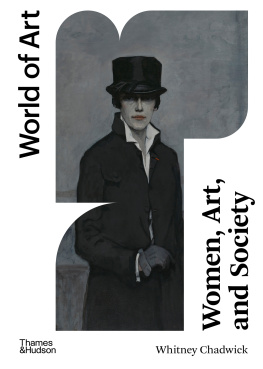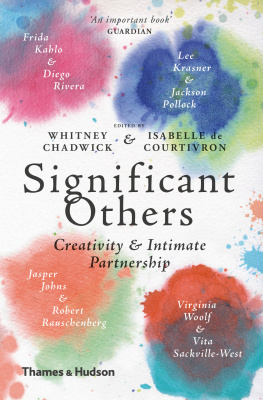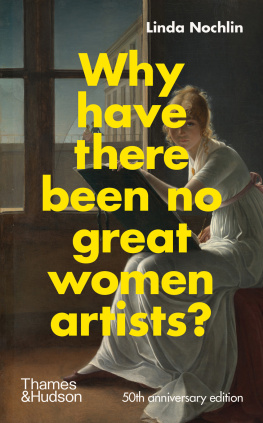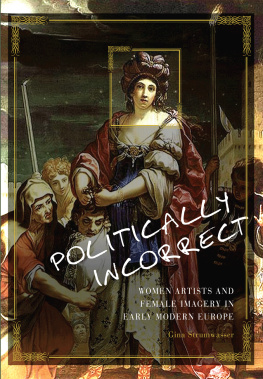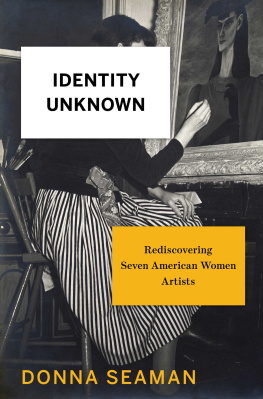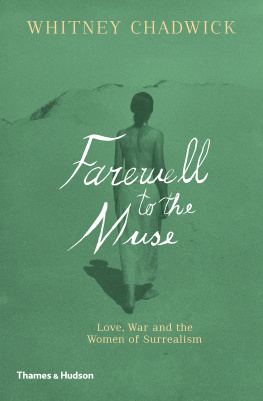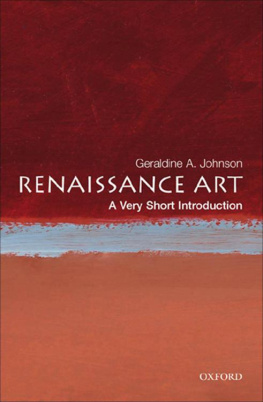


Marie Laurencin, Group of Artists, 1908 (detail)

About the Authors:
Whitney Chadwick was educated at Middlebury College and The Pennsylvania State University. She specializes in twentieth-century European and American art and her other books include Myth in Surrealist Painting, Women Artists and the Surrealist Movement, Significant Others: Creativity and Intimate Partnership (edited with Isabelle de Courtivron), Leonora Carrington: la realidad de la imaginacion, Mirror Images: Women, Surrealism, and Self-Representation (with Dawn Ades), and Amazons in the Drawing Room: The Art of Romaine Brooks. She is a frequent contributor on womens art to conferences and periodicals and has lectured widely on Surrealism, feminism, and contemporary art in the United States, Canada, and Europe. She is Professor Emerita at San Francisco State University.
Dr Flavia Frigeri is an art historian and curator, currently Teaching Fellow in the History of Art Department at UCL. Previously she worked at Tate Modern, where she co-curated The World Goes Pop, among other exhibitions. She is the author of Pop Art and Women Artists, both published by Thames & Hudson. She is currently curating exhibitions for Dia Art Foundation, New York, and MACBA Museu dArt Contemporani de Barcelona.
Contents
Flavia Frigeri
In 1971, Linda Nochlins ground-breaking essay Why Have There Been No Great Women Artists? was published in Artnews. Here, Nochlin drew attention to the limitations of art history when it came to women. Treated as objects rather than subjects, women had been left out of most art historical narratives and, with some urgency, she was bringing this grave omission to the fore. Following Nochlins lead, feminist art historians like Whitney Chadwick went on to probe existing male-centric narratives by shifting the paradigm of art history. This has involved more than just the systematic addition of women to established discourses and categorizations. It has led to new frameworks of understanding, which in turn have engaged with theoretical models borrowed from, among other things, structuralism, psychoanalysis, and semiology. Naturally, feminism understood as a set of positions rather than a univocal narrative has played a central role in the conceptualization of a more inclusive art historical discourse. The question of what feminism is and what it stands for within the confines of art has been a constant source of scrutiny, as demonstrated by Chadwick since the very first edition of this book.
Almost thirty years have passed since Women, Art, and Society was first published in 1990. At the time, the theoretical gap between male practitioners and their female counterparts was still abysmal. While the specificity of womens contributions to art and society was being articulated by feminist art historians, the gender balance was proportionally still skewed towards men. Volumes single-handedly devoted to male artists still abounded, while the work of women was championed by the voices of a select few, including Chadwick, Nochlin, Griselda Pollock, and Mary Ann Caws, among others. Thanks to their unwavering commitment, the limitations of art history as a discipline heavily weighted towards men has been gradually addressed and rebalanced. Nevertheless, thirty years down the line we are faced with an art world which commercially and institutionally still, on the whole, privileges men over women.
Museums and exhibitions have played an instrumental role in making the work of women artists known beyond the confines of their homes and studios. Institutions like the National Museum of Women in the Arts in Washington, D.C. (established in 1981) and the New Hall Art Collection at Murray Edwards College, University of Cambridge (founded in 1986) are singularly devoted to women artists and have significantly furthered discourses around the practices of many modern and contemporary practitioners. Similarly, temporary exhibitions like WACK!: Art and the Feminist Revolution (MOCA, Los Angeles, 2007) and the more recent Radical Women: Latin American Art, 19601985 (Hammer Museum, Los Angeles, 2017) have drawn attention to emblematic figures working under the influence of feminism across different geographical regions.
While the art of the twentieth and twenty-first centuries has been at the forefront of feminist concerns, art produced by women active in previous centuries has also been reassessed in light of a growing urge to integrate female artists into the art historical narratives that have so often left them behind. Exemplary, in this regard, is the exhibition The Art of Clara Peeters (201617) dedicated to the early-Modern still-life painter, which represented the first exhibition in Madrids Museo del Prados two-hundred-year history to be devoted to a woman painter. At long last, women artists from all periods in time are starting to be recognized as artists in their own right and not just as objects of representation.
As noted by Chadwick in her Preface to the fifth edition, the wider artistic landscape has gone through tremendous change since the publication of the first edition of Women, Art, and Society. Geographically far-reaching, culturally more inclusive and featuring works in a range of media including drawing, painting, sculpture, photography, film, video, and performance the art discussed in the new epilogue for this edition is meant to provide an introduction to some of the broader issues underpinning the work of female artists today.
Among the founding members of the British Royal Academy in 1768 were two women: the painters Angelica Kauffmann and Mary Moser. Both were the daughters of foreigners and active in the group of male painters instrumental in forming the Royal Academy, which no doubt facilitated their membership. Kauffmann, elected to the prestigious Academy of Saint Luke in Rome in 1765, was hailed as the successor to Van Dyck on her arrival in London in 1766. The foremost painter associated with the decorative and romantic strain of classicism, she was largely responsible for the spread of the Abb Winckelmanns aesthetic theories in England and was credited, along with the Scotsman Gavin Hamilton and American Benjamin West, with popularizing Neoclassicism there. Moser, whose reputation at the time rivaled that of Kauffmann, was the daughter of George Moser, a Swiss enameler who was the first Keeper of the Royal Academy. A fashionable flower painter patronized by Queen Charlotte, she was one of only two floral painters accepted into the Academy. Yet when Johann Zoffanys group portrait celebrating the newly founded Royal Academy, The Academicians of the Royal Academy (1772) appeared, Kauffmann and Moser were not included among the artists casually grouped around the male models.[] There is clearly no place for the two female academicians in the discussion about art which is taking place here. Women were barred from the study of the nude model which formed the basis for academic training and representation from the sixteenth to the nineteenth century. After Kauffmann and Moser, no woman was allowed membership in the British Royal Academy itself until Annie Louise Swynnerton became an Associate Member in 1922 and Laura Knight was elected to full membership in 1936.
Next page
